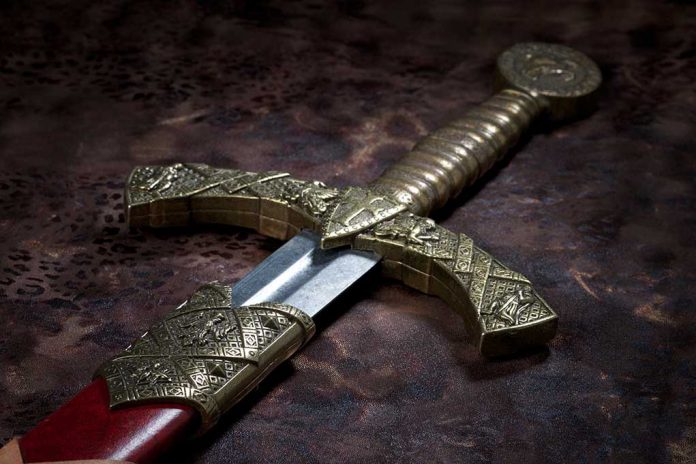
(DailyDig.com) – The steel swords and the leather and wood hilts of four Roman swords were unearthed in a chamber near the Dead Sea, surprisingly preserved after approximately 1,900 years.
On September 6th, the Israel Antiquities Authority said that three of the swords were shaped like Roman spatha blades, while the fourth sword had a ring and pommel pattern typical of the time. At the cave’s entrance, archaeologists uncovered a bronze coin dating back to the period of the Bar Kokhba revolt, which took place between 132-135 AD and challenged the Roman Empire’s sovereignty over Judea.
At first glance, the swords discovered roughly two months ago were clearly the kind that were utilized by Roman troops deployed in Judea during the period of the Jewish rebellion.
The uncommon discovery was made as part of the Judean Desert Survey, an effort by the Antiquities Administration to record and explore caverns in the Dead Sea region in order to retrieve scrolls and other artifacts before they are stolen. In the last six years, researchers have explored hundreds of caverns.
A stalactite with an old Hebrew inscription was discovered in a cave in the Desert of Judea 50 years ago, but it wasn’t until this summer that researchers went to the remote spot to properly record the find.
The pilum head of Roman workmanship was found in almost immaculate condition by Ariel University archaeologist Asaf Gayer in a nook at the cave’s rear.
A scholar from the Hebrew University of Jerusalem named Boaz Langford observed that the blades seemed as if they might be used today, despite being created over two thousand years ago.
Guy Stiebel, an archaeologist at Tel Aviv University who specializes in the military history of Rome, speculates that the bladed swords were made in a faraway European area and carried by Roman troops to the territory of Judea. He noted that such well-preserved specimens of Roman weaponry were very unusual, with just a few known from other parts of the empire and further afield.
Copyright 2023, DailyDig.com













